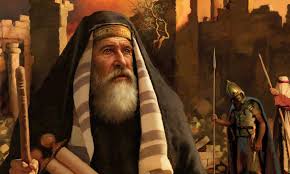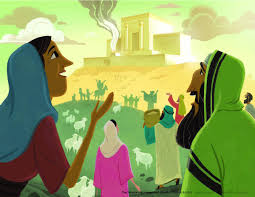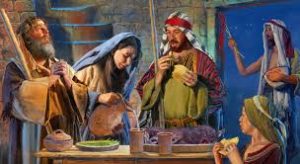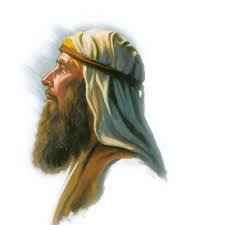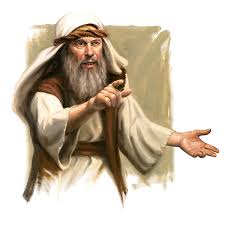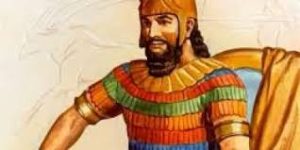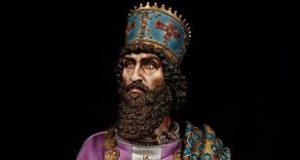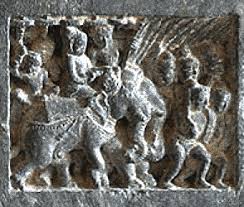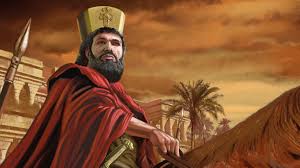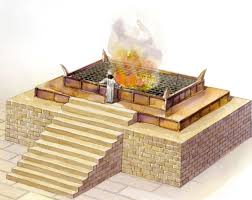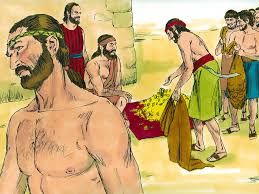Bh – Ezra Returns from Babylon Ezra 7: 1-10
Ezra Returns from Babylon
Ezra 7: 1-10
Ezra returns from Babylon DIG: “Now after these things” means 60 years later from 516 to 458 BC (Ezra Chapters 6 and 7). What else do these verses mention as to the who, what, how, when, where and why about Ezra? Why was it important to link him to Hilkiah (see Second Kings 22:4)? To Zadok (see Second Samuel 8:17)? To Moshe?
REFLECT: Ezra was skilled in the Torah (7:6 and 10; also see Nehemiah Chapter 8). What subject matter are you skilled in? By comparison, how skilled are you in the Bible? Who instilled in you a love for the Word? What do you do to build upon that?
During the ministry of Ezra (to see link click Bf – The Second Return).
Compiled by: The Chronicler from Ezra and Nehemiah memoirs
(see Ac – Ezra-Nehemiah From a Jewish Perspective: The Ezra Memoirs).
Ezra was descended from a long line of priests that dated all the way back to Aaron himself, who was the first high priest of Isra’el (see the commentary on Exodus Fv – The Selection of Aaron and His Sons as Priests). ADONAI had appointed Aaron, Moshe’s brother, to take on that sacred role, and He had stipulated that only men descended from Aaron should ever follow in his steps. In this alone, Ezra would have been a good choice to lead the Jews back to Jerusalem, as it would have indicated that the people were reestablishing the LORD’s ordered worship in the Temple.
However, that was not Ezra’s only qualification as a leader. He also had spent his life studying God’s Word and memorized it – and, more important, he had spent his life obeying it. He had become an expert in the Torah, a teacher of teachers, and a teacher by example as well as by the Word. Ha’Shem had appointed him to take the lead on this important mission because he was well qualified in knowledge and obedience.
Zerubbabel (along with Sheshbazzar) had been the first to lead the Righteous of the TaNaKh from Babylon to Jerusalem. Now, Ezra himself would gather together the next wave to return to the Land in 458 BC (see Af – Ezra-Nehemiah Chronology). As before, the trip would be long and filled with danger, but the king had issued a decree giving his blessing (see Bi – King Artakh’shasta’s Letter to Ezra), and he had loaded the people with silver and gold to fund the work.126
Ezra’s Genealogy: The purpose here is to make clear that Ezra, though not himself a high priest, was a member of the priestly line that had provided Isra’el’s high priests in the past. Now after these things (see Ag – The First Return), during the reign of Artakh’shasta king of Persia. Ezra’s genealogy traces his priestly descendants back through Zadok to Aaron. Ezra son of Seraiah, son of Azariah, son of Hilkiah, son of Shallum, son of Zadok, son of Ahitub, son of Amariah, son of Azariah, son of Meraioth, son of Zerahiah, son of Uzzi, son of Bukki, son of Abishua, son of Phinehas, son of Eleazar (see the commentary on Numbers Eb – God’s Eternal Covenant with Phinehas), son of Aaron the kohen gadol (Ezra 7:1-5). Ezra’s genealogy traces his descendants back through Zadok to Aaron.
Ezra was a Zadokite priest who was not only highly honored in his own day, but the Levitical priests, who are descendants of Ezra and Zadok, would be honored with a special ministry in the far eschatological future during the Messianic Kingdom (see the commentary on Jeremiah Gs – God Shows a Vision of the Millennial Temple). They were the ones who guarded God’s Sanctuary when the Israelites went astray from Him. In First Samuel 2:31-36 we read how YHVH through Samuel prophesied that the house of Eli was to be deposed and replaced by a faithful priest. That was finally fulfilled in First Kings 2:26-27. Then in Second Samuel 8:17 we read that Zadok became the high priest under King David and remained loyal to David after Absalom revolted (Second Samuel 15:24-29). Furthermore, Zadok was also loyal to Solomon (First Kings 1:8, 32-39, 2:26-27, 35) and the descendents of Zadok remained faithful during the days of Isra’el’s apostasy. As a result of their past faithfulness they will be given a superior role in the ministry of the Temple during the Kingdom. The Zadokites are to come near to minister before Me; they are to stand before Me to offer sacrifices of fat and blood, declares Adonai ELOHIM (Ezeki’el 44:15-31).
This Ezra came up from Babylon. He was a scribe (Hebrew: sophar) skilled in the Torah of Moses that ADONAI the God of Isra’el had given (Ezra 7:6a). Beginning with Ezra, there arose a class of specialists who were teachers of the Torah; scholars who studied, interpreted, and copied the Scriptures (see Bl – Ezra’s Reforms). The sages teach that Ezra could write out the entire five books of Moses from memory.
It is important to recognize that in the First Return led by Zerubbabel, in the Second Return led by Ezra, and in the Third Return led by Nehemiah, it was always the gracious prompting of the Ruach Ha’Kodesh that led the remnant home to Jerusalem. The Second Return will begin with God’s prompting of the Persian king to act compassionately toward Isra’el by granting Ezra everything he requested because the hand of ADONAI his God was upon him (Ezra 7:6b). Similarly, in the Third Return, Nehemiah will again express the conviction that Ha’Shem was responsible for the gracious support of the Persian throne when he stated: The king granted me the request because the good hand of my God was upon me (Nehemiah 2:8b).
Some of the people of Yisrael and some of the cohanim, the Levites, the singers, the gatekeepers, and the (Hebrew: nethinim) sanctuary servants (see An – Priests, Levites and Temple Servants Who Returned with Zerubbabel) also came up to Jerusalem in the seventh year of King Artaxerxes (Ezra 7:7). The cohanim, or the priests, were descendants of Aaron, the first High Priest. His sons and their descendants were to serve as the future priests, and high priests of the nation of Isra’el (see the commentary on Exodus Gf – Dedicate Aaron and His Sons So They May Serve Me As Priests). Only the high priest was permitted to enter the Most Holy Place in the Tabernacle and Temple, and that only once per year on the Day of Atonement (see the commentary on Leviticus Ef – Yom Kippur: The Day of Atonement). When you think priests – think Exodus; the Levites were descendants of Levi, one of the twelve sons of Jacob. When you think of the Levites, think Genesis. They assisted the priests in different aspects of the Temple. All priests were to be Levites, according to the Torah, but not all Levites were priests.
What compelled them to leave for Jerusalem? The answer for at least one of them – Ezra – seems to have been that he had a burden in his heart and soul for his fellow Jews in Tziyon. Like Nehemiah some twenty years later, he probably heard tales from merchants who came to Persian-dominated Babylon with news that things were not going well in Yerushalayim (Nehemiah 1:1-3). Jewish law concerning marriage had seemingly been neglected. There may have been a Temple in the City of David, but the Jews were in danger of repeating the very sins that had sent them into exile to begin with. Speaking almost a century earlier, Jeremiah had warned them not to treat the Temple as a good-luck charm and change their ways (see the commentary on Jeremiah Cc – False Religion is Worthless).
It seems that the religious life in Jerusalem, from the time of the Temple’s dedication to the time of Ezra’s arrival had taken on an outward conformity to the Temple’s rituals and sacrifices. There was outward conformity and an external compliance. But it was only a public faith, and it did not relate to the people’s private lives. As we will see, one of the issues that Ezra would have to contend with was the flagrant abuse of Isra’el’s commandment regarding marriage (see Bs – Those Guilty of Intermarriage). The people were conforming outwardly, but inwardly they were living to please themselves.127 Things were not much better in Ezra’s day. The Jews in the Holy City were neglecting the Scriptures. A new generation, whose grandparents and great-grandparents had built the Second Temple, now occupied the City. Those fifth-century Jews were in need of a preacher, someone who would proclaim the Word of God with personal application and integrity. They were in need of relearning the seriousness of sin, and this they could only do by falling in love with the Torah again. They did not need someone to salve their consciences with smooth words, and lull them to spiritual sleep with the assurance that all was well. They needed a teacher of the Torah, and for that urgent task, ADONAI raised up Ezra.128

Ezra the Scribe: Ezra arrived in Jerusalem in the fifth month of the seventh year of King Artakh’shasta’s reign. The second wave of exiles’ four-month journey from Babylon to Jerusalem, covering almost a-thousand miles, started in Nisan (March-April) and ended in Av (July-August). He began his aliyah (immigration to Isra’el) from Babylon on the first day of the first month and entered Jerusalem on the first day of the fifth month, because the good hand of his God was upon him (this same phrase is repeated in Ezra 7:28, 8:18, 22 and 31; and Nehemiah 2:8 and 18). Because Ezra had set his heart to seek the Torah of ADONAI, to observe and to teach its statues and ordinances in Isra’el (Ezra 7:8-10). Ezra, like David, had a heart after God. His love was for God’s Word and God’s ways, not his own. He did not leave Babylon to go to Jerusalem because he believed there would be a better life for him there. His ambition was not for personal gain or financial improvement; he wanted to see the LORD’s people return to a way of life that gave YHVH honor. His focus was the glory of God.
Before the exile (see the commentary on Jeremiah Gu – Seventy Years of Imperial Babylonian Rule) the priests were the guardian of the Scriptures and the Levites also taught the Torah (Hosea 4:4-6). But after the exile the scribes became more important (Sir 38:34b-39:11). The rabbis teach that Ezra marked that transition and set the pattern for future scribal activity.129
The TaNaKh does not look upon the Torah as a heavy weight or something negative, but as a blueprint for living (see the commentary on Exodus Dj – The Ten Commandments). It is truthfully the royal teaching of liberty, a divinely inspired ethical guide. Only a perversion of the Torah lead to the abuses that we find in the gospels. Most of the legal material in the five books of Moses show the application of these ethical principles to specific life situations. It is in the area of ethics where theology most affects everyday life.
Ezra set an example of the process by which a person grows to spiritual maturity and godliness. First, he set his heart, determined to understand the Word of God, probably spending much of his youth in the study and meditation of the Scriptures. The process naturally led to immediate application, as Ezra strove to do what ADONAI’s Word commanded, putting it into practice in his own life first. This, finally, led to a natural role as a teacher of others – for one cannot teach what one has not first practiced. Ezra’s life of obedience enabled YHVH to use him in a mighty way. The good hand of his God was upon him (Ezra 7:9), strengthening and equipping him for that role.130
ADONAI’s people always need Torah (Hebrew: teaching). A great percentage of the ministry of the Church is discipling, nurturing, and teaching. More than just imparting facts, this involves training in righteousness and motivating believers to love and obey God. It includes learning what a biblical view signifies for practical life today.131



